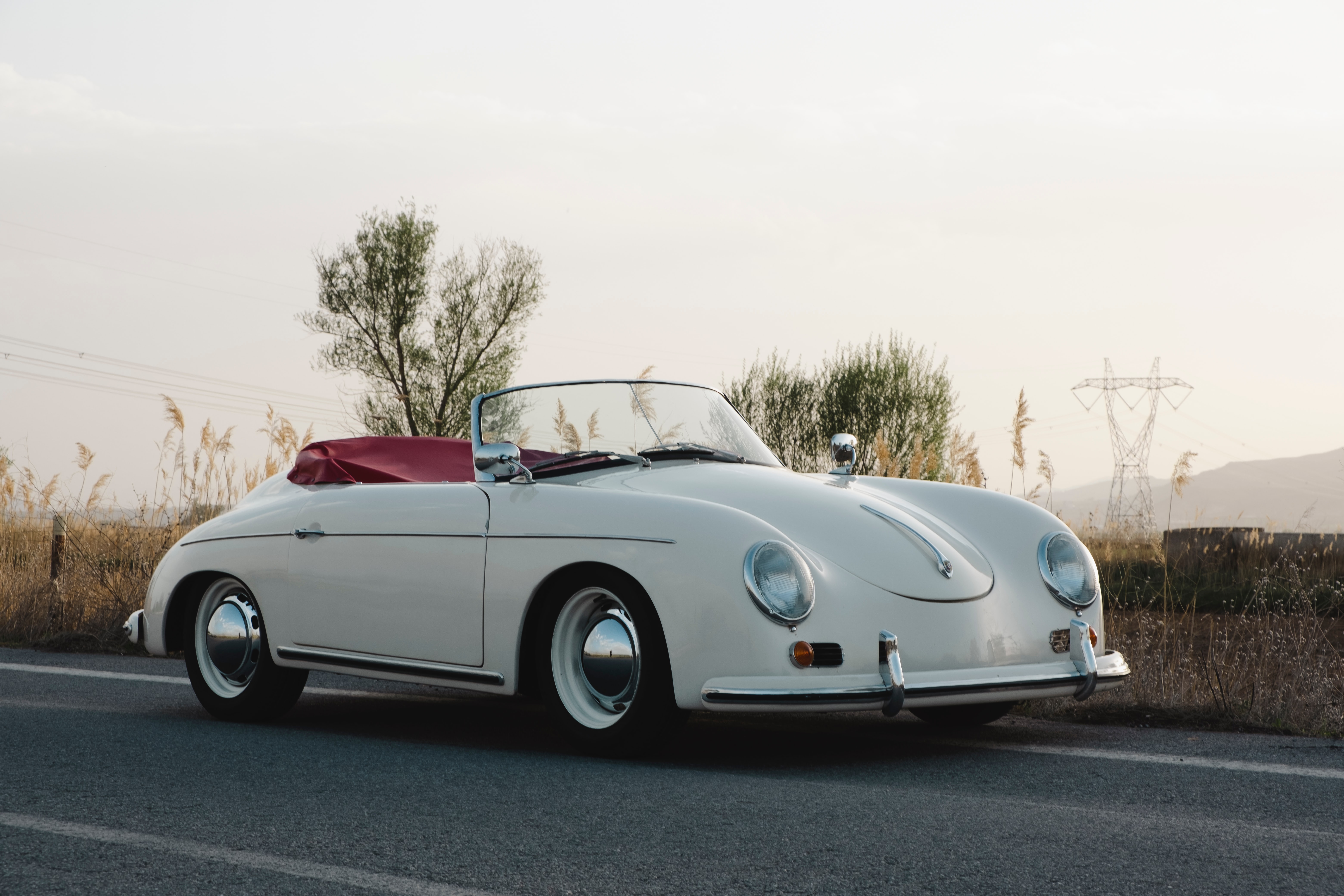
The History Of The Porsche 356
The Histroy
In 1947, the 356 model was invented. This began with the A model, which then grew into the B model. The 356 was created by Ferdinand “Ferry” Porsche the son of Dr Ing Ferdinand Porsche, founder of the company. The 356 was built in four distinct series, the original (“pre-A”), followed by the 356 A, 356 B, and finally the 356 C.
While the 356’s body was an original design by Porsche employee Erwin Komenda, its mechanicals including the engine cases and suspension components were based on and initially sourced from Volkswagen. The first 356 was road certified in Austria on June 8, 1948 and used many Volkswagen parts for manufacturing economy.
Quickly though, Porsche re-engineered and refined the car with a focus on performance. It is interesting to note that they had introduced the 4-cam racing “Carrera” engine (a design totally unique to Porsche sports cars) before they introduced their own, non-VW pushrod engine casing in late 1954.
Fewer and fewer parts were shared between Volkswagen and Porsche as the ’50’s progressed. The early 356 automobile bodies produced at Gmünd were handcrafted in aluminium, but when production moved to Zuffenhausen, Germany in 1950, models produced there were steel-bodied.
What are the models?
There are four main models, pre-A, A, B and C. Let’s have a dive into what makes these cars so special and unique. Many are now collectors items, with many fetching a significant amount at auction. They are a very worthwhile investment.
Pre-A Porsche 356
The Pre-A Porsche 356 as the first production vehicle to carry the Porsche name. After starting production in Gmund, Austria with aluminum bodies, production was moved to Stuttgart and the bodies for the Coupes were produced by Reutter in steel and the Cabriolets were made by the firm Glaser. The first version of these Reutter and Glaser cars – produced from 1950 to 1955 – are known as the “Pre-A” cars.
Many of the Porsche 356 Pre-A models are immensely rare, specifically the first 500 cars produced from the first model-year of the official Porsche production at Stuttgart, of which only a handful remain complete and in running order.
A Model
In late 1955, with numerous small but significant changes, the 356 A was introduced. Its internal factory designation, “Type 1”, gave rise to its nickname “T1” among enthusiasts. In the US, 1,200 early 356s had been badged as the “Continental” and then a further 156 from autumn 1955 to January 1956 as an even rarer T1 “European” variant after which it reverted to its numerical 356 designation. In early 1957 a second revision of the 356 A was produced, known as Type 2 (or T2).
Production of the Speedster peaked at 1,171 cars in 1957 and then started to decline. The four-cam “Carrera” engine, initially available only in the spyder race cars, became an available option starting with the 356 A.
Within the last 25 years, replicas of the 356 A have become very popular.
B Model
The mid-1962 356 B model was changed to the T6 body type (twin grilles on the engine compartment cover, an external fuel filler in the right front wing/fender and a larger rear window in the coupé).
Porsche did not draw attention to these (quite visible) changes, initially keeping the same model designation. However, when the T6 got disc brakes, with no other visible alterations, they called it the model C, or the SC when it had the optional, more powerful engine.
The 1962 line (T6 production) was a very different design in that the new T6 notchback coupé body did not start life as a cabriolet, but with its own production design. In essence, it had the cabriolet rear end design, the T6 coupé windshield frame and a unique hard top.
C Model
The last revision of the 356 was the 356 C introduced for the 1964 model year. It featured disc brakes all around, as well as an option for the most powerful pushrod engine Porsche had ever produced, the 95 hp (71 kW) “SC”. Production of the 356 peaked at 14,151 cars in 1964, the year that its successor, the new Porsche 911 was introduced to the US market (it was introduced slightly earlier in Europe).
The company continued to sell the 356 C in North America through 1965 as demand for the model remained quite strong in the early days of the heavier and more “civilized” 911.
